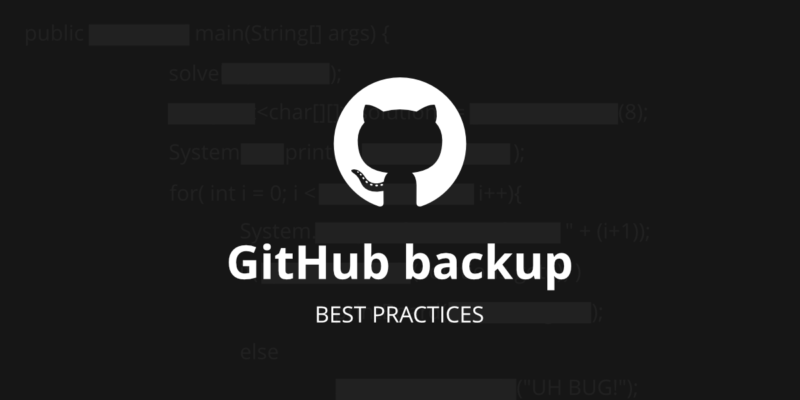Git has revolutionized version control, providing developers with a robust and efficient tool to track changes in their codebase. However, as with any technology, it’s crucial to have a safety net in place. In the world of Git, this safety net is commonly referred to as “Git Backup.” Let’s dive into the why, how, and best practices of Git Backup to ensure the integrity and security of your code.
Introduction to Git
Git, developed by Linus Torvalds, has become the de facto standard for version control in software development. It allows multiple developers to collaborate seamlessly, keeping track of changes, and facilitating efficient code management. Git Backup involves creating copies of your Git repositories to safeguard against data loss. While Git ensures version control within a repository, having a backup ensures protection against unforeseen events, such as hardware failures, accidental deletions, or even malicious attacks.
Why is Git Backup Essential?
Imagine months of code contributions disappearing due to a server malfunction. Git Backup acts as a safety net, preserving your hard work and preventing irrevocable data loss. For businesses relying on code deployment, a lack of access to critical repositories can halt operations. Git Backup ensures continuity by providing a fail-safe mechanism.
How to Perform Git Backup
Deciding between full and incremental backups depends on your storage capacity and recovery time objectives. Full backups capture the entire repository, while incremental backups only store changes since the last backup. Regular backups are essential, but the frequency depends on the project’s activity. High-traffic repositories may require daily backups, while less active projects can opt for weekly or monthly schedules.
Git Backup Best Practices
Properly organizing your repositories simplifies the backup process. Group related projects together, making it easier to manage and recover in case of a failure. The security of your backups is as crucial as the backup process itself. Employ encryption and access controls to protect sensitive code repositories from unauthorized access. Manual backups are prone to errors and delays. Automate the backup process to ensure consistency and reduce the risk of oversight.
Common Challenges in Git Backup
Large repositories pose challenges in terms of storage and processing power. Implementing effective compression and storage optimization techniques is vital. Binary files can bloat repositories and complicate backup processes. Employ Git Large File Storage (LFS) or external storage solutions for efficient management. Regularly verify the integrity of your backups to detect and rectify issues promptly. This ensures that the backed-up code is reliable and can be restored without errors.
Tools and Techniques for Git Backup
Git provides built-in commands like git clone and git push for basic repository duplication. Understand these commands to create manual backups when needed. Explore third-party tools like GitLab, Bitbucket, and GitHub Actions for automated and feature-rich backup solutions. These tools often offer additional features beyond basic Git functionality. Leverage cloud platforms such as AWS, Azure, or Google Cloud for secure and scalable backup solutions. Cloud-based backups ensure accessibility and durability.
Recovering from Git Backup
In the unfortunate event of data loss, knowing how to restore from a backup is critical. Familiarize yourself with the process to minimize downtime. Regularly check the integrity of your backups. Automated tools and manual checks can help ensure that your backup is reliable and can be used for recovery. Perform periodic recovery drills to validate the effectiveness of your backup strategy. Testing ensures a smooth recovery process when it’s needed the most.
Conclusion
In the dynamic world of software development, where code is constantly evolving, Git Backup is your safety net. Understanding its importance, implementing best practices, and being prepared for challenges are essential steps in securing your codebase. By following these guidelines, you can ensure the safety and continuity of your development projects.
FAQs
- How often should I perform Git backups?
- Regular backups are essential. The frequency depends on project activity, with high-traffic repositories needing more frequent backups.
- Can I use Git built-in commands for backup?
- Yes, Git provides basic commands like
git clonefor manual backups, but third-party tools offer automated solutions.
- Yes, Git provides basic commands like
- What challenges can I face with large repositories during backup?
- Large repositories may require more storage and processing power. Employ compression and optimization techniques to address these challenges.
- Why is testing the recovery process important?
- Testing ensures that your backup strategy works when needed, minimizing downtime during actual recovery.
- Is cloud-based backup a secure option for Git repositories?
- Yes, cloud platforms like AWS and Azure provide secure and scalable backup solutions for Git repositories. techazad
